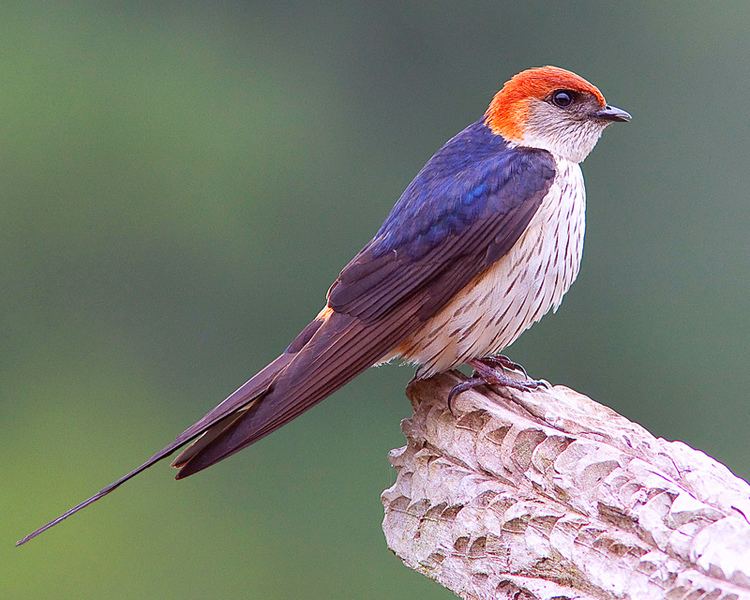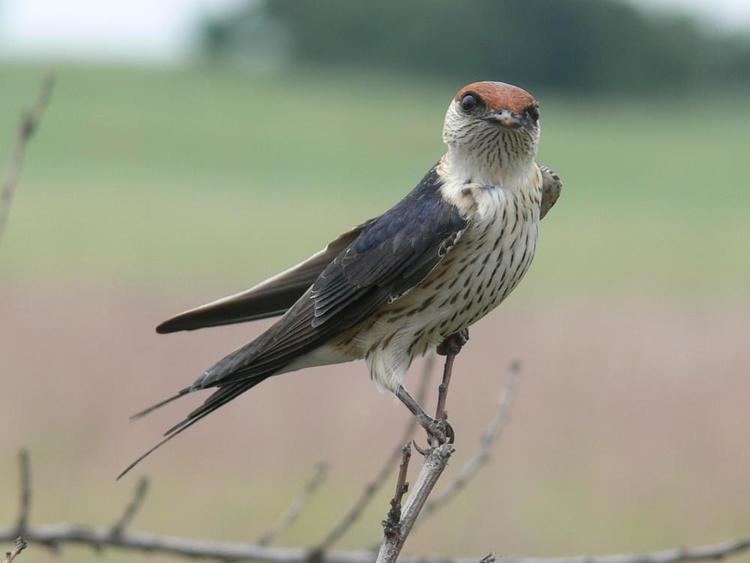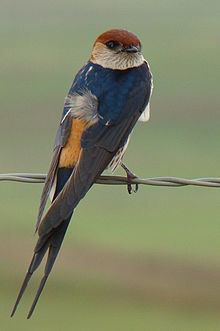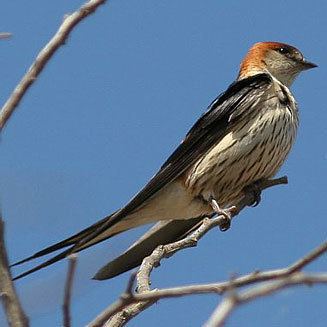Order Passeriformes | Phylum Chordata Family Hirundinidae Scientific name Cecropis cucullata Rank Species | |
 | ||
Similar Lesser striped swallow, White‑throated swallow, Swallow, Bird, Pearl‑breasted swallow | ||
Unusual greater striped swallow feeding behaviour
The greater striped swallow (Cecropis cucullata) is a large swallow that is native to Africa south of the equator.
Contents
- Unusual greater striped swallow feeding behaviour
- Greater striped swallow hirundo cucullata jask ka kreskowana grootstreepswael
- Description
- Range
- Habits and habitat
- Nesting
- References

Greater striped swallow hirundo cucullata jask ka kreskowana grootstreepswael
Description

The greater striped swallow is 18–20 cm long. It has dark blue upperparts with a pale orange rump and a chestnut crown, nape and sides of the head. The underparts and underwing coverts are creamy white with dark streaking, and the upper wings and underwing flight feathers are blackish-brown. The blackish tail has very long outer feathers; these are slightly longer in the male than the female. Juveniles are duller and browner, with less contrast and shorter outer tail feathers. The flight is slow and buoyant, and the call is a twittering chissick.

This species can be distinguished from the smaller lesser striped swallow, Hirundo abyssinica, in that the latter species has heavier and darker underparts striping, a deeper red rump, and rufous rather than buffy ear coverts. Lesser also prefers less open habitats.
Range

It breeds in southern Africa, mainly in South Africa, Namibia and southern Zimbabwe. It is migratory wintering further north in Angola, Tanzania and southern Zaire.
Habits and habitat

The greater striped swallow is common, unafraid of humans, and has benefited from the availability of nest sites around habitation. It feeds mainly on flying insects, but has been known to eat small fruits. It is a bird of dry open country, such as grassland, and has a preference for hills and mountains. It avoids more wooded areas, but is often found around human habitation.
Nesting

The greater striped swallow builds a bowl-shaped mud nest with a tubular entrance on the underside of a suitable structure. The nest has a soft lining, and is often reused in later years. The nest may be built in a cave or under a rock overhang or fallen tree. This species has benefited from its willingness to use buildings, bridges, culverts and similar man-made structures. Given the choice, it will select a high nest site.
The eggs are glossy white with a few brown spots; three eggs is a typical clutch. Incubation is by the female alone for 17 to 20 days to hatching. Both parents then feed the chicks. Fledging takes another 23 to 30 days, but the young birds will return to the nest to roost for a few days after the first flight.
